*UPDATE* 2/26/2018
FWHM value: 7.18nm, not bad for plastic fiber and cleaved with an Exacto knife :)
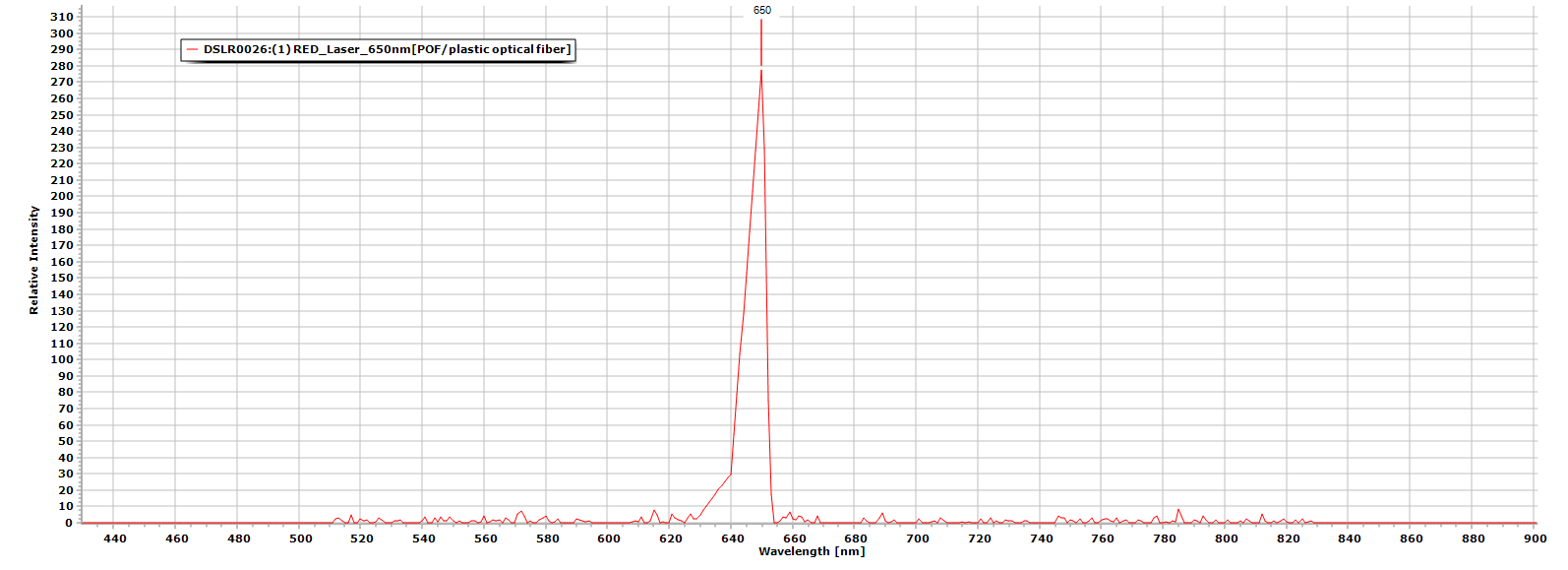
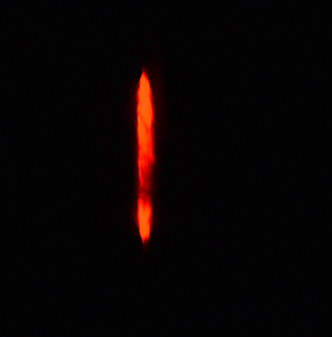
I had some POF lying around (really for about 10 years now,) and it was for a fiber optic project I was working on and just never got back to, well, I found it and decided to build a makeshift Endoscope type apparatus. The fiber itself is PMMA ( acrylic,) with a very thin cladding and 96% core, so a lot of light transfer and easy to work with and cleave.
I set up my solux lamp as the light source and I'll let the pictures I took with my Nikon D3400 tell the rest of the story...
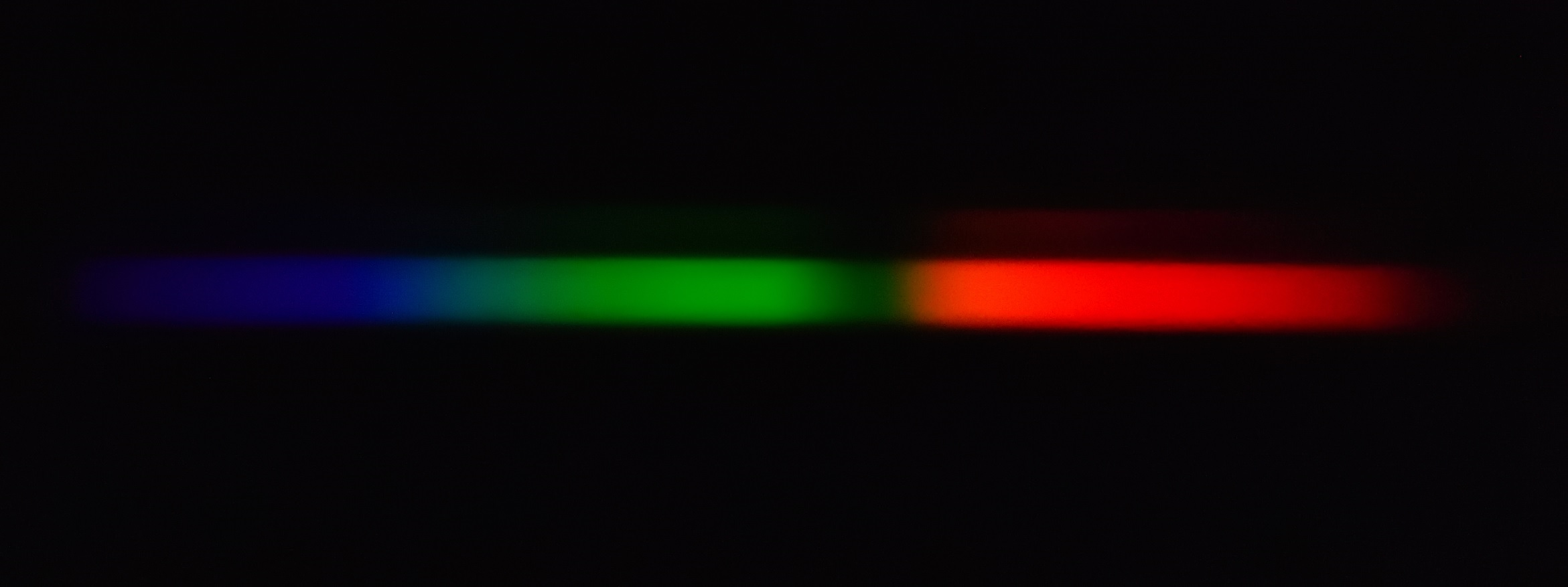
This is the Solux lamp spectral image ( 6000 x 4000 Pixels) NEF/NRW converted to JPEG, then PNG, in order to upload it to Hackaday.
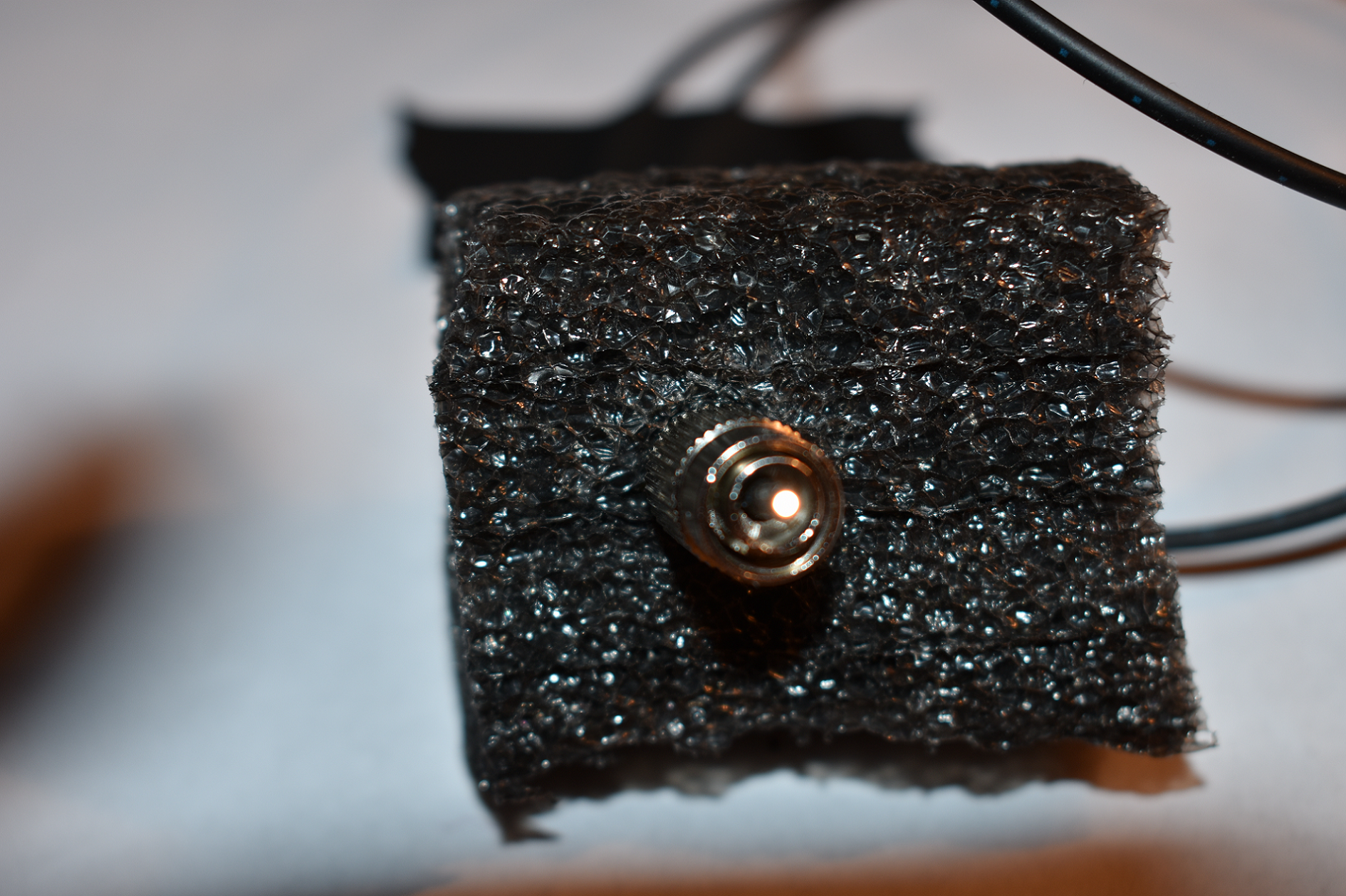
I took an old fiber optic cable and cut the end off to get the coupler and drill it out so the plastic fiber end would slide through, I should have photographed the restraint in back to show how I cut it down the middle to remove it from the old cable and placed it on the new setup and crazy glued it in place and tie wrapped it and it is quite secure!
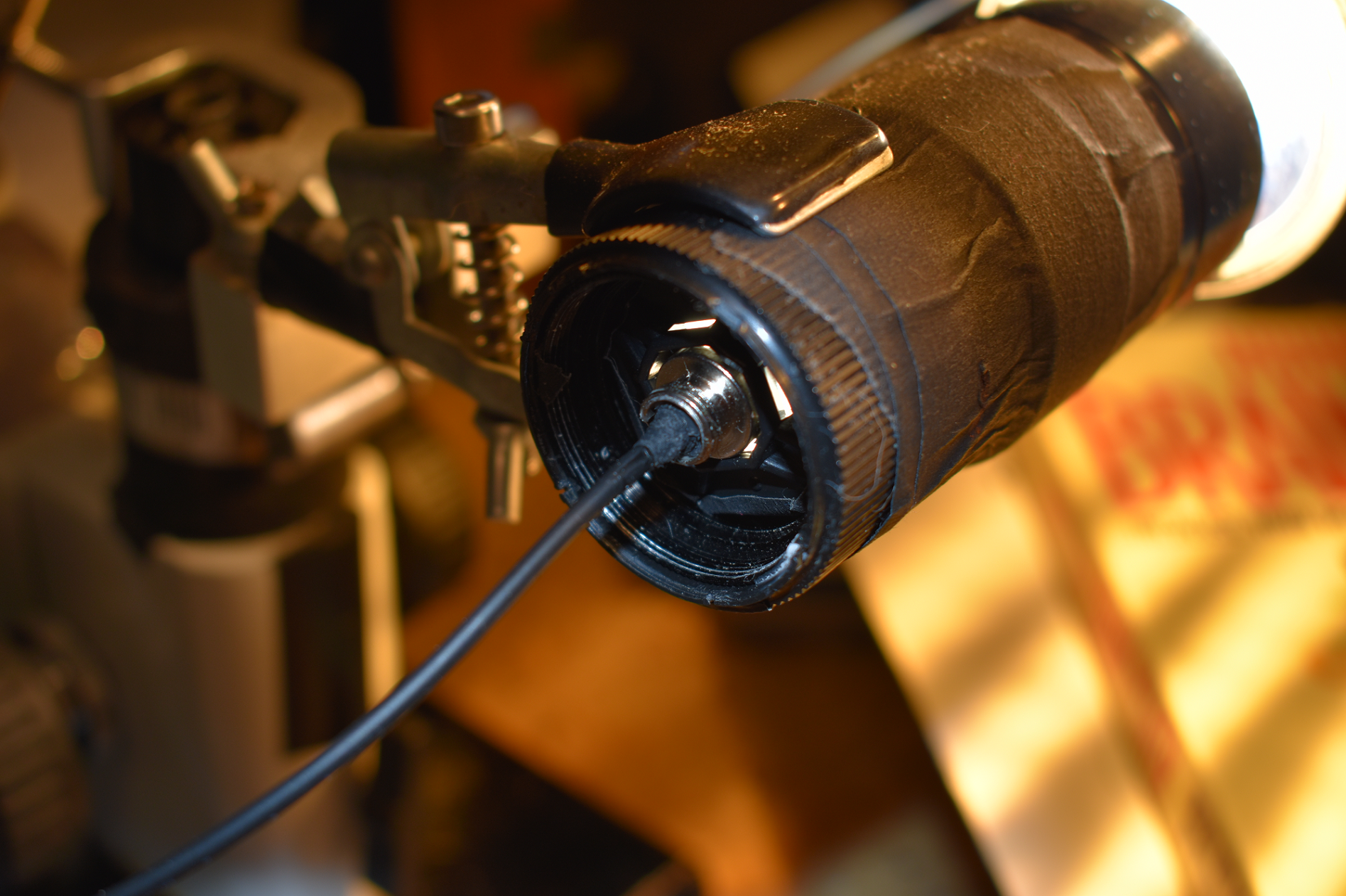
This is where the magic is happening, simple, a telescopic eyepiece, two 18mm dia. 10X objective lenses (placed 25mm from the fiber end and concentrically placed opposite of each other @ 5mm spaced apart.) This keeps the beam right side up and about 2mm in diameter before hitting the fiber optic end.
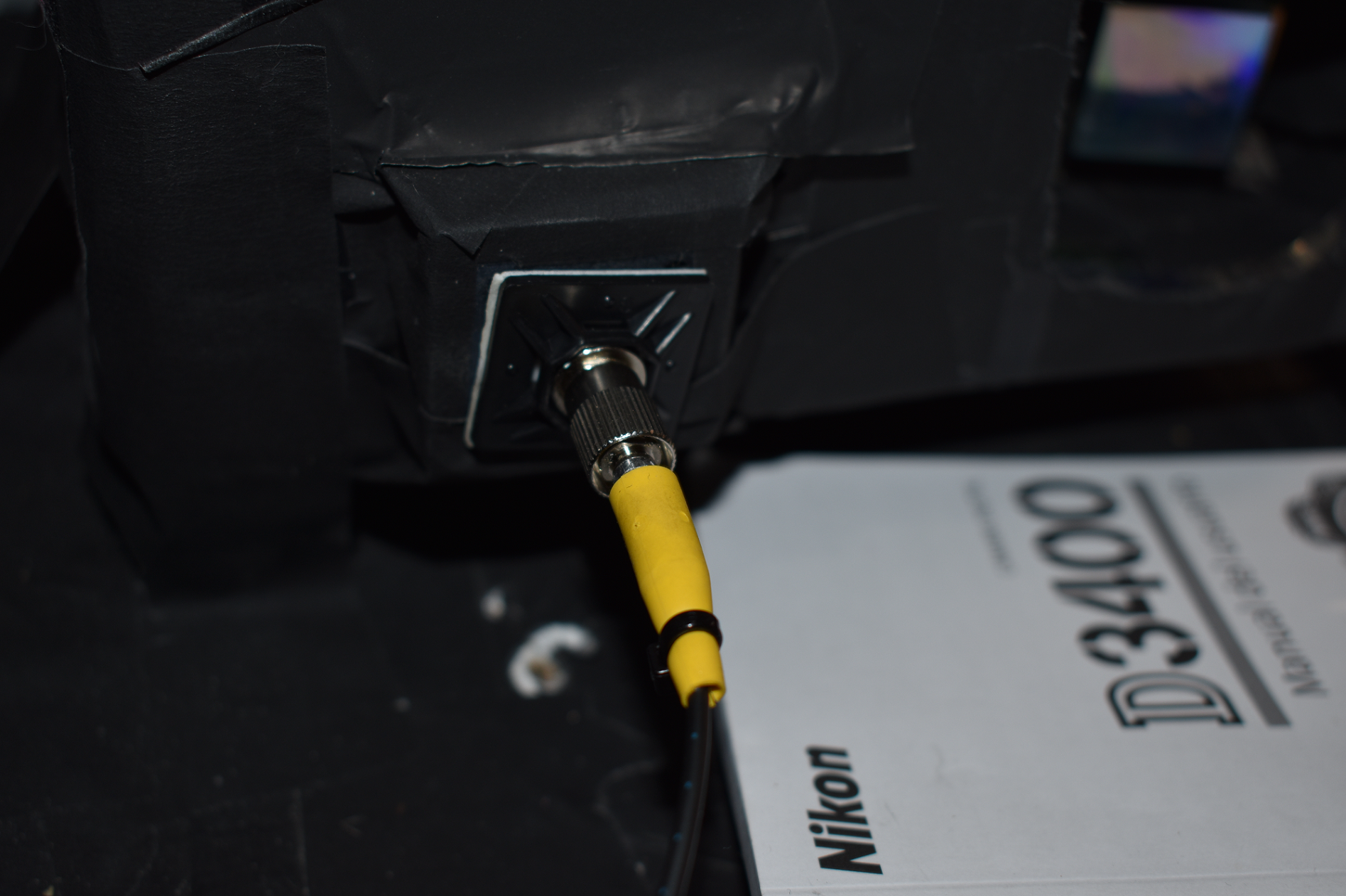
And of course this is my experimental prototype testing platform that I am using at the moment for the Raman probe project. Hey U know what? This is the pic of the restraint! Duh...
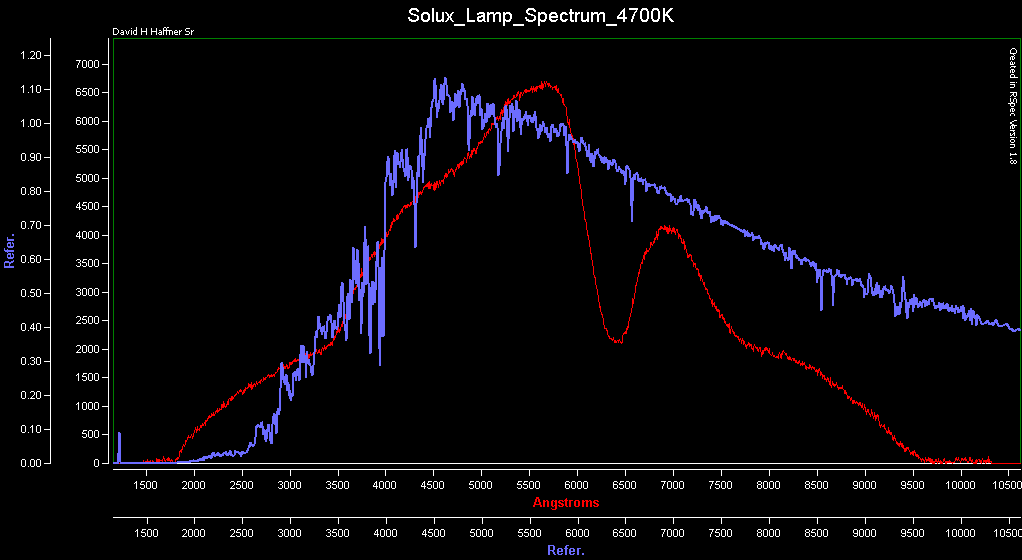
This is the raw spectral data form the camera, I had to take still shots as I discovered that the D3400 can only resolve @ 1080 pixels when in video mode, no matter what:(
So I take several individual stills and average them together to get the best image and data possible, which I should be doing anyway, since each image has a resolution factor of 6000 x 4000 pixels. Also here I am calibrating the spectrum to out Sun which is classified as a G-5v type dwarf
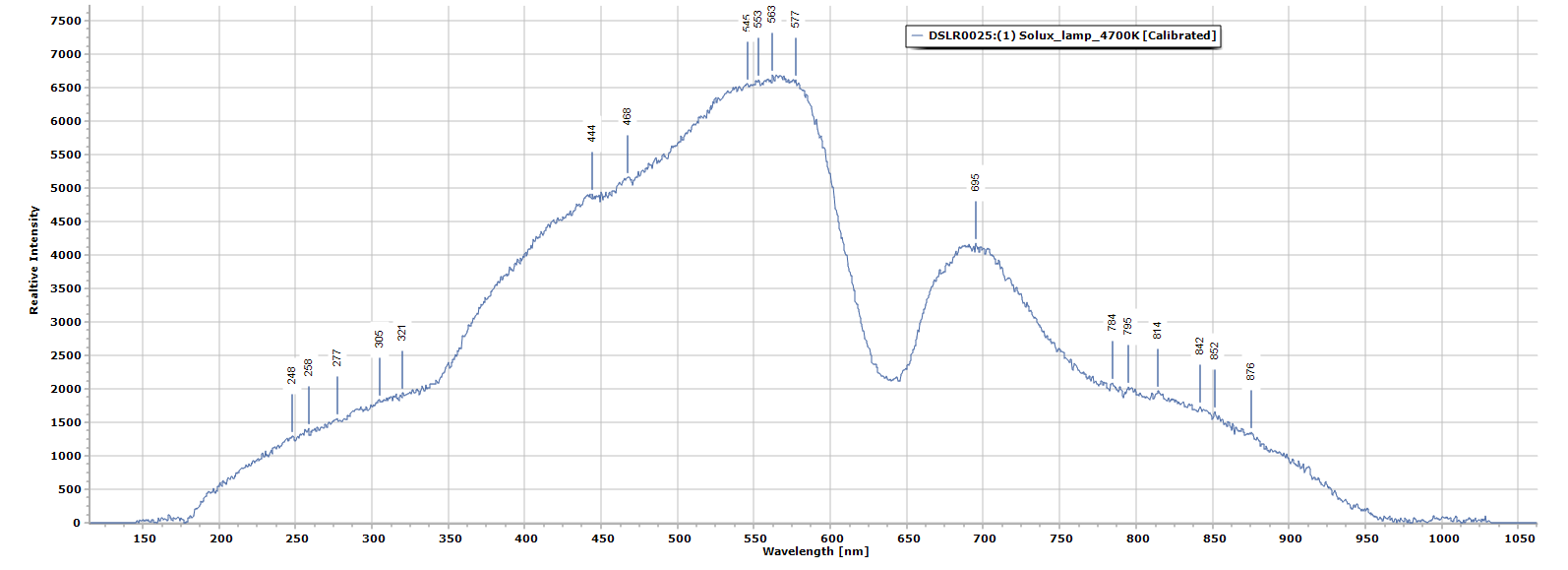
This is the spectral data all cleaned up and processed in Spectragyph processing software.

This is both the calibrated and un-calibrated Solux spectral data.
 David H Haffner Sr
David H Haffner Sr
Discussions
Become a Hackaday.io Member
Create an account to leave a comment. Already have an account? Log In.
Hey, David, have you tried ball lenses (or halves) for coupling to fiber? I always see them in the Edmund Optics catalog, but haven't had the opportunity to try myself. I also wonder if a cheap glass bead of some sort would work in a pinch.
Are you sure? yes | no
Hey Ted, Yeah I've seen them. When I worked for Bell Atlantic (which is now Verizon,) I use to be a fiber optic splicer and outside plant technician, back then (1999) it was hard core splicing, polishing the ends and everything, very tricky business, then around 2001 they introduced what was called refractive index matching gel and a completely different kind of coupling end, very easy and quite reliable.
The ball lenses probably would work but that's just an extra step, I would never be able to use this plastic fiber for my main Raman project but it surprised me how well it worked for this broadband experiment.
Are you sure? yes | no